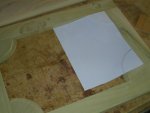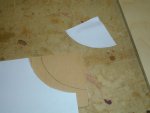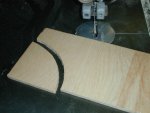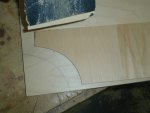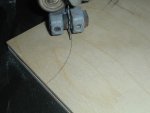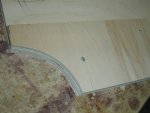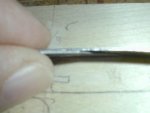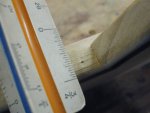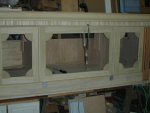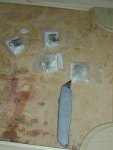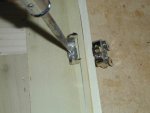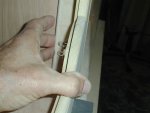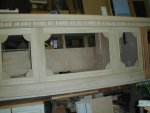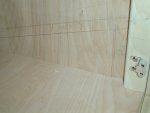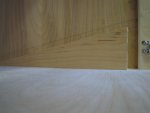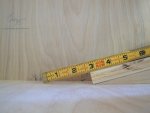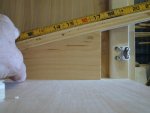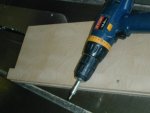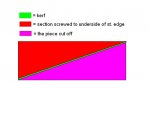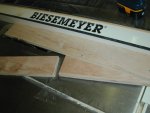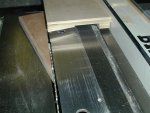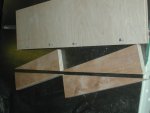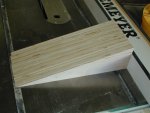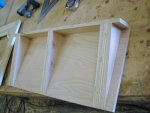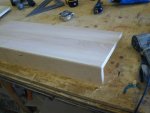Since the panels that will be wrapped with cloth and then inset into the back of the doors have been cut, it is time to finish trimming out the interior of the doors.
Like Greg always says "divide and conquer".

Divide that big job into smaller parts.
Have a look at the plan. Notice the the three doors left of the center panel and right of it are going to be the same size vertically and horizontally.
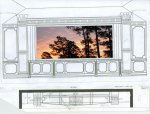
Also make note that the center panel and the two doors at the very outside, at the edge of the picture are the same height!

What does that mean to the one of a kind production builder?
#1- 9 doors/panels the same height = 18 stiles all cut at the same time with the same stop block!

#2- 6 doors the same width = 12 rails cut the same length.
#3- 2 end doors same width = 4 rails same length
#4- center panel has 2 rails the same length.
Now if that is not good enough there is more!

When the stiles and rails were glued up, the rails were glued up flush to the top and bottom of the stiles, then the quarter rounds were inserted into the 90° created by the rail and stile.
The quarter rounds were cut at the same time with the same stop block so they too are exactly the same size as each other.
Thus we have a "voila".
Question "What
"voila" do you think has happened?"
Answer "Due to the stiles, rails and quarter rounds being the same size as each other,
and considering the exactness when glueing the rails to the stiles, the insertion of the quarter round, and compressing them into the corners tightly, we have created.........in theory............
the same setting for a stop block to cut,
18 pieces of trim for the stiles,
change stop block and cut
12 pieces of trim for the 12 rails cut the same length,
change stop block and cut
4 more pieces of trim for the 2 outside door rails (to be cut after the cabinets have been built),
change stop block and cut
2 pieces the same length for the long center clip on panel.
Granted I did have a + or - variance of 1/32" for a snug fit but all in all it does work well.
THINK REPETITIVE/ with accuracy.
Much easier than cutting 36 individual pieces of trim.
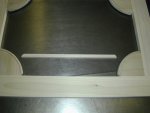

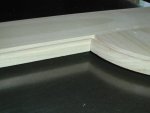
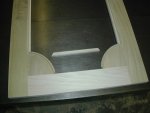
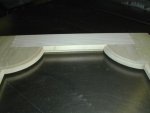
Shaz





 ,
, ? Do the ends come out the other side,
? Do the ends come out the other side,  But by the way... Thanks, Shaz
But by the way... Thanks, Shaz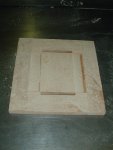
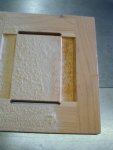
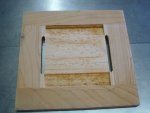
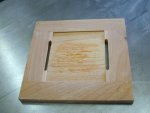

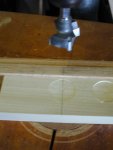
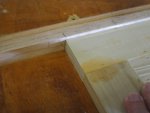
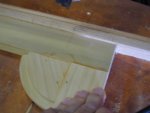
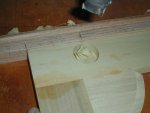



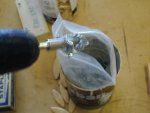
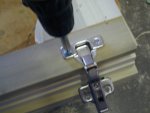

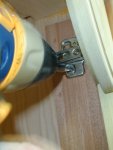
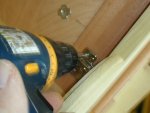
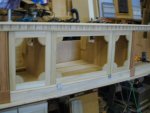
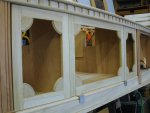


 .
.